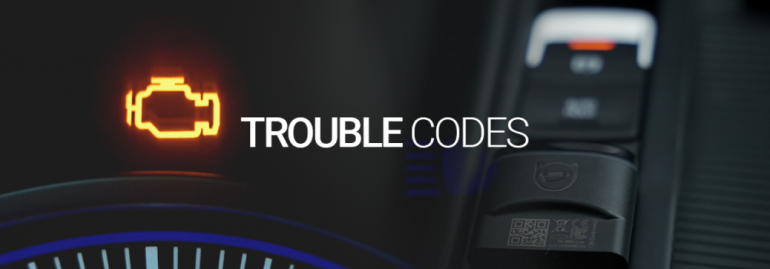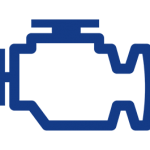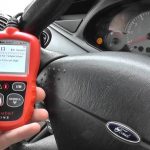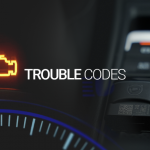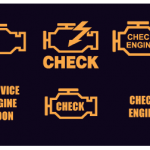Having no idea what the meaning of all trouble codes on your car means? Read this article to learn what these numbers mean. In it you’ll learn about U-codes and PDTCs. PDTCs are related to transmission problems, while UDTCs refer to sensor failure. Ultimately, trouble codes are a reflection of a problem. Understanding which codes mean the most can help you make better decisions about your car.
Diagnostic trouble codes
On-Board Diagnostics (OBD) or “diagnostic trouble codes” are a set of five numbers and letters generated by a malfunctioning system. They help the owner determine what system or component is malfunctioning, and can be read by a diagnostic device, such as the asTech(r) Remote Diagnostic Device. Alternatively, the Master Technicians at CDS can read DTCs and provide diagnostic advice. To understand the meaning of your DTC, follow the steps below:
To read a trouble code, connect a diagnostic scanner to the car’s OBD port. The tool will display a series of DTCs, each of which is unique to your car. If you’re not familiar with DTCs, you can consult a vehicle manual or professional OBD 2 software to understand what the code means. Then, you can try to figure out the exact problem by consulting the manual and using a code reader.
DTCs can be easy to interpret, but you must remember that not all problems generate DTCs. In fact, some problems can trigger DTCs without requiring any repair. For instance, a DTC might indicate an out-of-range sensor circuit, or an emissions control problem. You must know where to look for these codes in order to diagnose the cause of your vehicle’s problem. The engine control module and the powertrain control module are the two main locations where these codes are stored.
Luckily, the latest models of vehicles use the same connector. However, the make and model of your car can result in minor variations in the software and hardware. A 16-pin diagnostic connector is used to read DTC fault codes, and can often be hidden behind panels. A vehicle owner’s manual will tell you where the OBD-II connector is located. To access the diagnostic connector, you must have the diagnostic connector installed on the car.
In addition to OBD code readings, the DTCs may also be triggered by a malfunctioning ECT sensor. The ECT sensor must be securely installed, and the engine coolant temperature should be within the right range. If none of these steps is enough, you should take the vehicle to a professional for diagnosis. These trouble codes are often indicative of a problem in a specific system or circuit. If you don’t know what it means for your car, you can use the Scan Tool Companion reference program. It will give you information on what to check and what to look for.
Meaning of each code
Listed below is a quick overview of the trouble codes and their meaning. Some trouble codes are generic and apply to all vehicles. Others are specific to a certain manufacturer. If you see one of these, it probably means the manufacturer is having a problem. Most trouble codes fall into one of the four categories. Read on to learn more about the meaning of each trouble code. Also, know that the fourth and fifth characters in trouble codes refer to the system that the fault occurred.
The Diagnostic Trouble Code (DTC) is a series of five digits, and understanding how it’s composed will help you properly diagnose a vehicle. First, you should know that each code is composed of a letter, and the second character denotes the code type. In addition to generic codes, there are also manufacturer-specific codes, which are often more severe than the generic ones. Once you know the meaning of each code, you can start troubleshooting your car effectively.
Each DTC has a first character (two or three) that represents the type of malfunctioning. For example, P0101 indicates a sensor or mass air flow circuit fault. A mechanic can interpret these codes to diagnose a vehicle problem. If you are not sure what to look for, you can refer to a list of DTC codes PDF. You can even download it onto your phone or device and refer to it whenever your car is showing one of these codes.
While there are many different DTC codes, the first character indicates what part of your vehicle has a problem. You can also determine the category by looking at the definition of the first character. For example, if a code is a P code, it means that a problem with the engine, transmission, or drivetrain is causing the problem. In addition to engine and drivetrain, you’ll see codes for B, C, and U. These codes are all related to the body and passenger compartments.
Most modern fleet vehicles have built-in computers that monitor their performance. If a vehicle malfunctions, the check engine light will turn on. The computer will then output a diagnostic trouble code that can be used to pinpoint the problem. Often, these DTC codes are also referred to as engine fault codes or DTC. These codes are a five-character string containing one letter followed by four numbers. They are helpful in determining the root cause of vehicle problems and the right course of action.
Meaning of PDTCs
The first clue to the diagnosis of a PDTC is the STI pattern. Some PDTCs are encapsulated and are often mistaken for adenomas. The diagnosis of a PDTC is often difficult, but the following points will help you understand the signs and symptoms of this condition. Listed below are some tips to help you differentiate a PDTC from a TC.
PDTCs are a type of emission control device on a vehicle. The presence of these devices is one of the factors used to determine a vehicle’s Smog Check inspection result. If your vehicle has a PDTC, it will not cause your Smog Check inspection to fail, but if you do, the PDTC will not result in an inspection. If you’re in doubt about whether you have a PDTC, consult a physician who specializes in this condition.
While PDTCs can be a valuable source of training, they have significant shortcomings. They tend to have high turnover among trainers, lack common approaches to good dairy farming management, and lack adequate PR. Despite this, PDTCs can be very effective in meeting the training needs of small to medium-sized dairy farmers. However, some of these problems are easily remedied by improving the quality of the curricula and making them more cost-benefit-efficient.
Vehicles with PDTCs will not pass a smog test unless the check engine light is on, but these vehicles will often clear themselves using a scan tool or a battery reset. If you have one of these symptoms, it’s crucial to fix the underlying issue to clear the PDTC. Run a Universal or a specific drive cycle to eliminate the issue. If you have a diagnostic scan tool, make sure to run a specific one for the model you’re working on.
PDTCs can be treated with chemotherapy or external beam radiation, but there is currently no standardized treatment for the disease. It may require a more aggressive approach than chemotherapy or surgery. Fortunately, some research has been done on the condition, and a total thyroidectomy with lymph node dissection has been associated with a regional control rate of 81% after 5 years. However, radioiodine treatment is only effective in a subset of patients, and there is not enough data to determine exactly how many patients respond to the treatment. This is why high-dose radioiodine therapy is recommended for patients with a PDTC.
Meaning of U-codes
What Are U-Codes and What Are They For? A trouble code consists of one or more letters and numbers, each denoting a specific system or function of a vehicle. There are two basic types of trouble codes: powertrain and body. Powertrain codes relate to functions of the engine, transmission, and associated drivetrain accessories. Body codes, on the other hand, refer to functions that occur within the passenger compartment. The first digit of a trouble code indicates which system the trouble code belongs to. These trouble codes are manufacturer-specific.
P codes and U-codes are similar, but they are different. Generic codes relate to emission diagnosis while enhanced codes relate to features of the vehicle. The first digit of a P code is the manufacturer-specific code, while B, C, and U codes relate to a different system or component. While a repair technician may have the ability to check an OBD II code to determine the cause of a problem, you can do it yourself by reading the code yourself.
A pending code indicates that something is wrong with an emission control system. If this happens again, the Check Engine Light will come on. If it continues, the code becomes an active one and the vehicle needs to be serviced. A U-code is not specific to a specific part of the car and can indicate a number of different problems. There are over 3k generic codes for cars, so you can find your vehicle’s specific code by consulting your owner’s manual or an OBD-tool manual. If you need more information about a particular code, you can search online and read an explanation of the meaning.
What Are U-Codes? Learn About These Error Codes


